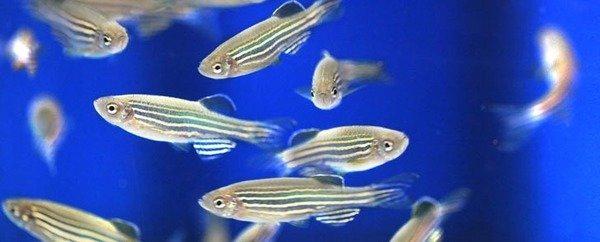The risks of water systems to ecological environments
Despite regulations and pre-treatment of wastewater, it can still contain contaminants, including some pharmaceutically-active components. As the worldwide population continues to increase, so do the challenges that come with measuring and monitoring the risks that are associated with municipal wastewater effluent (MWWE). MWWE is discarded by the community and even post-treatment, may pose environmental health and safety concerns that need to be further explored.
Measuring the toxicity of wastewater
To identify and manage the challenges being faced with levels of toxicity in MWWE, it is necessary to examine, the effects on aquatic life by using appropriate bioindicators to establish levels and toxic thresholds are essential. In this regard zebrafish (Danio rerio) are a proven and effective model for toxicity testing. They are in a unique position as an ecotoxicological model, due to high-output breeding and their small size and transparent bodies are ideal for observations. Also, there is a multitude of knowledge surrounding developmental, behavioural and endocrine functions of zebrafish. Thus enabling, rapid screening of pharmaceutically active compounds in whole effluents.
Municipal water waste effluent negatively impacts the zebrafish lifecycle
ViewPoint engineers work very closely with scientists to support the research necessary in this evolving field. To address a gap in the scientific knowledge relating to short-term contaminant exposure, novel research was published following the use of the ZebraBox in assessing the behavioural changes in zebrafish; this was following exposure to low-level contaminants in MWWE. The evidence demonstrated an impact on various stages of the zebrafish lifecycle, from embryo to larvae and juvenile [1]. Not only were behavioural changes observed, but biochemical analysis revealed an increase in the juvenile stress responses.
How ZebraBox was used to monitor toxicity in wastewater ?
The behavioural activity of zebrafish was examined using samples of tertiary treated MWWE containing a mixture of chemical compounds; these compounds had an affinity for various cellular receptors, of neuronal and peripheral original, underpinning the importance of this research.
Zebrafish were exposed to pre-treated MWWE at differing concentrations (0-50%) and the short-term effects on their behavioural activity were measured at different stages of their lifecycle. The observations focused on (1) the embryogenic photo motor response (PMR) – an indicator of neurological development and (2) the larval locomotor activity – assessing the impact of the MWWE on behavioural activity.
Embryogenic photomotor responses (PMR) is reduced
Approximately 30-40 hours post fertilisation (hpf) larvae have a short PMR resulting in a spike in activity over a period of 10 seconds. The twitching observed is caused by induction and photo-stimulation of opsin-based photo-receptors. PMR activity is a suitable behavioural model for screening of neuronal-based activity [2] as it is possible to identify whether neurotoxic compounds affect neurodevelopment at an early stage. This is carried out by measuring the PMR via video acquisition under pre-defined lighting cycles. The ZebraBox is an ideal behavioural system for high-throughput applications due to its ability to simultaneously stimulate and quantify PMRs from all wells of 96-well plates in only 30seconds.
The results showed a reduction in PMR following 24-hour exposure to 10% and 50% MWWE when compared to 0% MWWE.
Larval visual motor responses (VMR)
ZebraBox tracking technology has supported work that suggests the normal behaviour of zebrafish larvae may be disrupted due to the presence of environmental contaminants [3]. It is established that zebrafish locomotor activity is suppressed when larvae are held in an illuminated environment; in contrast, complete darkness induces a spike in locomotor activity. In this regard, pre-determining a lighting regime using ZebraBox technology and supporting software, enabled the behavioural activity of zebrafish to be observed following exposure to MWWE and larval activity was calculated as the total distance travelled every 30 seconds. It was shown that larval locomotor activity was reduced when exposed to 10% MWWE for 24 hours compared to 0% MWWE.
Linking toxicity and behaviour/score
The presence of compounds that may be able to influence the receptors present in the zebrafish have shown that they are able to alter the response of neurons in conditions of low level and short-duration exposure is experienced. Furthermore, the presence of the compounds had an impact on the normal behaviours of the zebrafish which resulted in reduced movement as identified by locomotor activity.
Identification of these parameters will enable will enable the setup of future experiments using ToxMate Lab. ToxMate Lab is able to simultaneously monitor the behavioural responses of multiple species, in the presence of specific and controlled modifications to the medium that they are placed in.
ZebraBox is not limited to zebrafish
Zebrafish are not the only species that the ZebraBox can be used to observe and monitor locomotor activity. Because ZebraBox allows for different sized vessels, larger species can be examined such as earthworms can be observed in Petri dishes, for example. Due to their essential role in soil and agricultural system, novel in vivo testing methods are currently required to characterise the locomotor activity of earthworms with two main requirements: a method that enables stimulation of movement and the ability to record sensitive movements and continuous monitoring [4]. It was shown over 100 years ago that earthworms move their head in response to light stimulus [5] but has not been taken advantage of for behavioural assessment. Zu et al. (2020) manipulated this concept to establish an optical test method and emphasised the necessity for behavioural tests for terrestrial animals such as earthworms, due to environmental health and safety. They agreed the Zebra fish-based system was a valid piece of equipment for different species. Therefore, consideration may be given for work involving species such as Drosophila, frequently used to assess the effect of compounds on neurological development.
References
1. Gauthier, P.T. and M.M. Vijayan, Municipal wastewater effluent exposure disrupts early development, larval behavior, and stress response in zebrafish. Environmental Pollution, 2020. 259: p. 113757.
2. Gauthier, P.T. and M.M. Vijayan, A rapid zebrafish embryo behavioral biosensor that is capable of detecting environmental β-blockers. Environ Pollut, 2019. 250: p. 493-502.
3. Thompson, W.A., V.I. Arnold, and M.M. Vijayan, Venlafaxine in Embryos Stimulates Neurogenesis and Disrupts Larval Behavior in Zebrafish. Environmental Science & Technology, 2017. 51(21): p. 12889-12897.
4. Xu, T., et al., A sensitive optical-based test method for the locomotor activity of earthworms. Sci Total Environ, 2020. 715: p. 136966.





